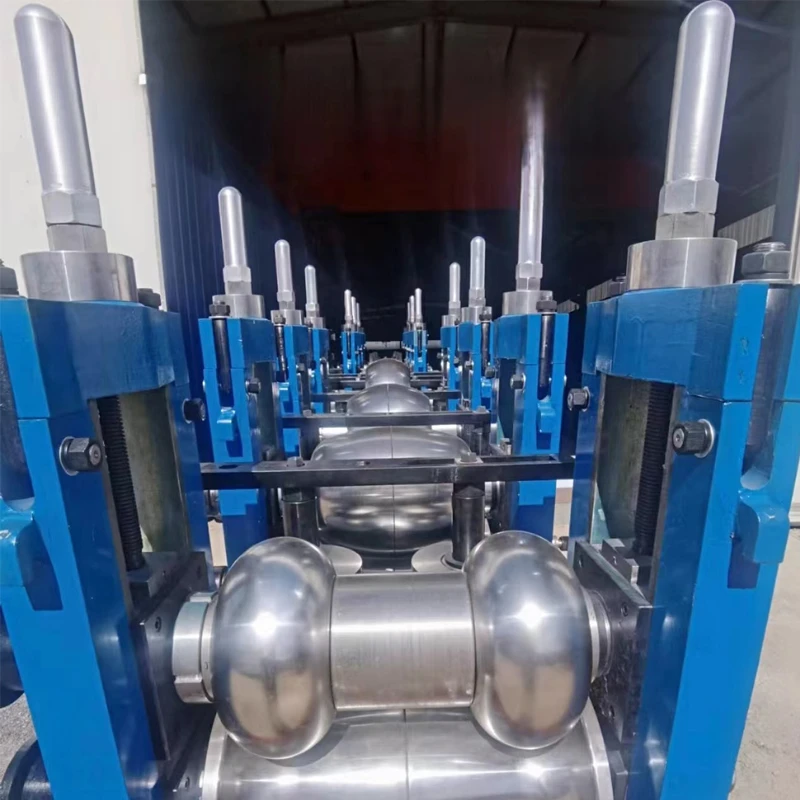cold ring rolling machine
Understanding Cold Ring Rolling Machines
Cold ring rolling machines play a pivotal role in the manufacturing of metallic ring components used across various industries, including aerospace, automotive, and machinery. This innovative technology brings about improvements in dimensional accuracy, material properties, and overall production efficiency. In this article, we will explore the principles behind cold ring rolling, its applications, advantages, and future trends.
What is Cold Ring Rolling?
Cold ring rolling is a process in which metal rings are formed from blank materials by rolling them at room temperature, using specific machinery. The process involves the deformation of the material as it is passed through a pair of opposing rolls, which shape the material into the desired ring form. Unlike traditional forging methods, which involve heating the material, cold ring rolling allows for the manipulation of metals without the need for high temperatures. This leads to several benefits, including enhanced material strength and reduced energy consumption.
Principles of Operation
The operation of a cold ring rolling machine involves several key components the rolls, the workpiece, and the drive mechanism. Typically, the rolls are designed with specific profiles that help shape the material effectively. The process begins with a blank or pre-formed ring that is placed between the rolls. As the rolls rotate, they gradually reduce the thickness of the ring’s walls and increase its diameter, providing a more uniform and precise product.
One of the significant advantages of cold ring rolling is the ability to produce rings with varying wall thicknesses, which can be critical for specific applications. Additionally, the cold working of the material enhances its mechanical properties by refining the grain structure, resulting in improved strength and durability.
Applications
Cold ring rolling machines are extensively used in various sectors. In the aerospace industry, they are utilized to manufacture components like turbine rings and engine housings, where lightweight and strong materials are crucial. The automotive industry relies on these machines for producing wheel rims and bearings, where precision and reliability are paramount. Furthermore, cold ring rolling is used in the production of various industrial components, including shafts, valves, and pressure vessels, contributing to the efficiency and safety of numerous machinery and equipment.
cold ring rolling machine

Advantages of Cold Ring Rolling
The benefits of cold ring rolling are manifold. Firstly, it allows for the production of parts with improved mechanical properties without the need for additional heat treatment. The process generates limited metal waste, creating an environmentally friendly production method. Furthermore, cold rolling can lead to significant cost savings by reducing the energy consumption typically associated with hot working processes.
Another advantage is the capability to achieve tighter tolerances and finer surface finishes compared to other machining processes, which often require secondary operations such as machining or grinding. This not only shortens the overall production cycle but also enhances the product's performance in its intended application.
Future Trends
As technology advances, the future of cold ring rolling machines looks promising. Innovations in automation, such as the incorporation of advanced robotics and AI, are expected to enhance production efficiency and reduce human error. Smart manufacturing practices will also enable real-time monitoring and data collection, leading to more precise control over production parameters.
Moreover, the development of new materials and the increasing demand for lightweight components are likely to drive advancements in cold ring rolling technologies. Manufacturers are continuously exploring methods to enhance the process, including hybrid techniques that combine traditional cold rolling with additive manufacturing.
Conclusion
Cold ring rolling machines are integral to modern manufacturing, providing the ability to create high-quality, precise ring components across various industries. With their numerous advantages and the potential for future advancements, they represent a significant step forward in materials processing technology. As industries evolve and demand higher performance standards, cold ring rolling will undoubtedly remain an essential technique for engineering efficient and durable parts.
-
High Frequency Straight Seam Welded Pipe Production Line-BzZhou Xinghua Machinery Equipment Manufacturing Co., LTD.|Precision Welding, High EfficiencyNewsJul.30,2025
-
High Frequency Straight Seam Welded Pipe Production Line|BzZhou Xinghua|Precision Welding&EfficiencyNewsJul.30,2025
-
High Frequency Straight Seam Welded Pipe Production Line - BzZhou Xinghua|Precision Engineering&EfficiencyNewsJul.30,2025
-
High-Frequency Straight Seam Welded Pipe Production Line-BzZhou Xinghua Machinery Equipment Manufacturing Co., LTD.NewsJul.30,2025
-
High-Frequency Straight Seam Welded Pipe Production Line-BzZhou Xinghua Machinery Equipment Manufacturing Co., LTD.|Precision Manufacturing, High EfficiencyNewsJul.30,2025
-
High Frequency Straight Seam Welded Pipe Production Line-BzZhou Xinghua Machinery Equipment Manufacturing Co., LTD.|Precision Steel Pipe Manufacturing&Industrial EfficiencyNewsJul.29,2025


